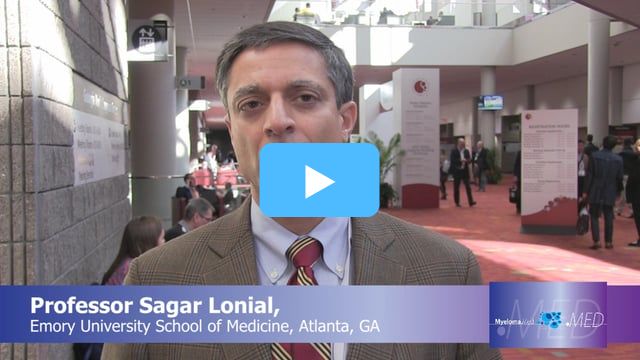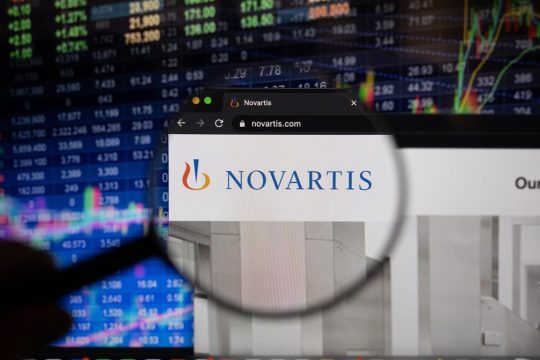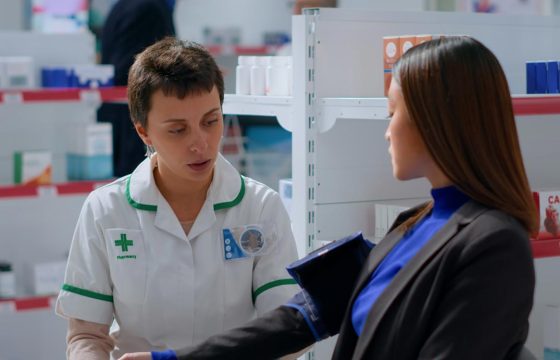Advertisment
ASH 2017: Experts offer guidance on smouldering myeloma

Article written by Tom Collins. Interview by Esther Drain.
Even as definitions of risk groups in myeloma become more sophisticated, a reasonable way to assess those patients with high-risk smouldering myeloma is a simple, three-prong method, said Professor Sagar Lonial, MD, chair of haematology and medical oncology at Emory University.
Even as definitions of risk groups in myeloma become more sophisticated, a reasonable way to assess those patients with high-risk smouldering myeloma is a simple, three-prong method, said Professor Sagar Lonial, MD, chair of haematology and medical oncology at Emory University.
“The simplest way is to put three factors together,” he said. “Do they have more than 10% (bone marrow) plasma cells? Do they have a free light chain (ratio) greater than 8 or less than 0.125? And do they have an M protein greater than 3? If they have all three of those, that fits into a very simple, high-risk smouldering group, with their median time to progression somewhere between 2 and 3 years.”
Some patients in this group could be observed rather than treated, based on the clinician’s judgement, although trials have shown that lenalidomide-dexamethasone treatment in this group can delay progression and produce an overall survival benefit.
Professor Lonial did caution that there are more complex definitions that might add accuracy, but that this approach is reasonable to employ in the clinic.
“There are lots of other more complicated schema that are out there, based on small data sets or data sets from an individual institution, but that actually is the simplest way that we can use on an everyday basis in our practice.”
In another session, Bruno Paiva, MD, PhD, a haematologist and immunologist at University of Navarra in Spain, said that as smouldering myeloma categories become better understood and subdivided, three groups of biomarkers — those involved in protein production, tumour cell biology, and disease dissemination — are coming into wider use for categorizing patients into risk groups that can help guide treatment. The International Myeloma Working Group is expected to provide guidelines on which biomarkers should be used to identify that critical patient group — high-risk smouldering myeloma — that is on the cusp of requiring treatment, he said.
“These biomarkers provide different information regarding myeloma biology and therefore they should provide you complementary information to try and predict patients’ outcomes,” he said.
After a baseline set of biomarkers is collected, the risk should be recalibrated every 6 to 12 months, he said. But if biomarker collection is part of that recalibration, collection of this data will need to be minimally invasive, he said.
In a study presented at ASH1, a “curative” strategy for patients with high-risk smouldering myeloma was pursued. High-risk was defined mainly as the presence of at least 10% bone marrow plasma cells and serum M protein of at least 3. Asymptomatic patients with MM with the three biomarkers that now define MM were allowed in as well, because the definition of active MM had not yet changed when the study was designed, researchers said.
Patients are being treated with 6 cycles of carfilzomib-lenalidomide-dexamethasone (KRd) as induction, then melphalan followed by autologous stem cell transplant (ASCT), then 2 cycles of KRd 3 months later, followed by lenalidomide maintenance.
Of the 29 patients who’ve received the ASCT, a complete response was seen in 69% and MRD-negativity in 58%.
“Although longer follow-up is required,” researchers said, “this ‘curative strategy for high-risk SMM’ seems to be encouraging.”
Reference
- Mateos M, Paiva B, Oriol A, et al. Curative Strategy for High-Risk Smoldering Myeloma (GEM-CESAR): Carfilzomib, Lenalidomide, and Dexamethasone (KRd) As Induction Followed by HDT-ASCT, Consolidation with KRd and Maintenance with Rd. Abstract 402. Presented December 10, 2017. Annual Meeting of the American Society of Haematology. Atlanta, Georgia.





